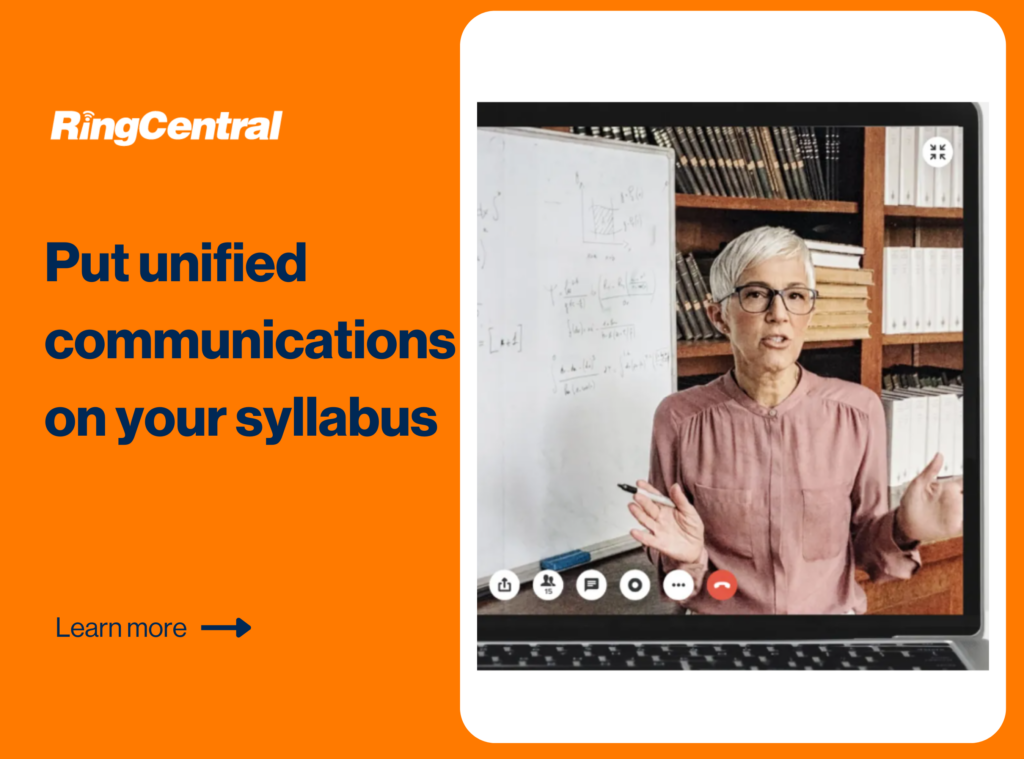What is unified communications for education?
Imagine this: Ms. Johnson, a dedicated primary school teacher in rural Tasmania, needs to reach a parent about their child’s upcoming project. Traditionally, this might involve a flurry of paper notes, phone calls that go unanswered, or frantic emails lost in a digital abyss. But what if there was a simpler, more efficient way?
Enter Unified Communications (UC), a solution for Aussie schools drowning in a sea of communication channels. UC integrates all your school’s communication tools – voice calls, video conferencing, instant messaging, and file sharing – into one user-friendly platform.
Benefits of unified communications for education sector
From pigeon post to instantaneous: ditch the endless emails and missed calls. UC allows teachers, parents, and administrators to connect instantly via their preferred channels, be it a quick message or a face-to-face video call. This not only saves time but also ensures everyone’s on the same page, from upcoming school plays to important announcements.
Collaboration made easy: gone are the days of teachers struggling to coordinate lesson plans or share resources across different departments. UC fosters seamless collaboration, allowing educators to brainstorm, share documents, and hold virtual meetings, regardless of their physical location. This fosters a more cohesive learning environment and ultimately benefits the students.
Boosting parental engagement: we all know engaged parents make a world of difference. UC allows schools to connect with parents in real-time, keeping them informed about their child’s progress, upcoming events, and any important updates. Imagine sending quick reminders about homework deadlines or sharing photos from a school excursion – all through a convenient app!
Safety first: Australian schools prioritise student safety. UC offers secure communication channels for emergency situations. Teachers can instantly reach colleagues or parents in case of an incident, ensuring a quick and coordinated response. Additionally, UC can be used to communicate important safety updates during emergencies like wildfires or floods.
Tech savvy for the future: Australia’s education sector is constantly evolving. UC helps schools embrace technology by providing a user-friendly platform that integrates seamlessly with existing systems. This fosters a tech-savvy learning environment, preparing students for the digital world that awaits them.
What key challenges does the education sector face?
Watch Ruwan Wellalage, Senior Marketing Manager at RingCentral, talking about meeting the needs of this sector and about key challenges for the education sector:
- Privacy and reliability: protecting sensitive student information like grades, health records, and family details is paramount. Outdated systems may lack adequate security features, making them vulnerable to data breaches. Unreliable communication tools like spotty email servers or dropped phone calls can lead to missed messages, hindering important information flow between teachers, parents, and administrators. This can have a domino effect, impacting student learning and overall school operations.
- Student-teacher experience: traditional communication methods like emails and notes may not foster a dynamic learning environment. Students crave interactive learning experiences, and outdated communication systems may limit these opportunities.
- Emergency communication: in an emergency situation, every second counts. Fragmented communication systems can make it difficult to quickly and effectively reach all students, staff, and parents. Schools need a communication system that allows them to broadcast messages through various channels simultaneously, ensuring everyone receives critical information during an emergency.
- Compliance: Australia has strict data protection regulations like the Australian Privacy Act 1988. Outdated systems may not comply with these regulations, putting schools at risk of legal repercussions. Educational institutions must comply with accessibility standards like the Disability Standards for Education 2005. Traditional communication methods may not cater to the needs of students with disabilities, hindering their learning experience.
Unified communications solution from RingCentral
Australian schools face a unique challenge: fostering a dynamic learning environment amidst tight budgets and outdated technology. Communication plays a crucial role in achieving this, but fragmented systems like email, phone calls, and disconnected platforms often create bottlenecks.
With RingCentral’s Unified Communications (UC) solution you will keep all communication in a single app:
Team messaging: ditch the hallway whispers and lunchroom debates. Stay connected with colleagues in real-time, from class prep to pep rallies.
HD video meetings: virtual classrooms? Club meetings across the globe? One-click video meetings make distance learning and collaboration a breeze.
School switchboard reinvented: empower students with a modern switchboard experience. Admissions, financial aid, or registration – seamless phone support is just a call away.
Multi-touchpoint contact center: connect with students on their terms. Voice calls, text messages, social media, or email – RingCentral lets you start conversations anywhere, anytime.
The future of education communications
Unified communications isn’t just about streamlining communication; it’s about transforming the educational experience. By fostering collaboration, personalizing learning, and embracing technology, UC paves the way for a future where education is more connected, engaging, and accessible for all.
Unified Communications (UC) is poised to orchestrate a transformation that goes beyond streamlining tasks; it will fundamentally reshape the learning experience for students, educators, and parents alike.
Originally published 24 Jul, 2024







